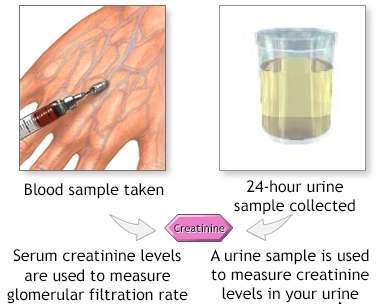A client who has polycystic kidney disease (PKD) presents to the emergency department with reports of a severe headache. Which of the following complications should the nurse expect?
Pancreatic cyst
Cerebral aneurysm
Renal calculus
Diverticulitis
The Correct Answer is B
Choice A reason: Pancreatic cysts can be associated with PKD but are not typically linked with severe headaches.
Choice B reason: Cerebral aneurysms are a known complication of PKD and can present with severe headaches if they leak or rupture.
Choice C reason: Renal calculi, or kidney stones, can cause pain but are not typically associated with headaches.
Choice D reason: Diverticulitis is a condition of the colon and would not be expected to cause headaches.
Nursing Test Bank
Naxlex Comprehensive Predictor Exams
Related Questions
Correct Answer is A
Explanation
The correct answer is Choice A
Choice A rationale: Headache and restlessness can be signs of a seizure or neurological disturbance, which phenytoin is used to treat. Phenytoin is an anticonvulsant medication that helps control seizures by stabilizing neuronal membranes and reducing excitability.
Choice B rationale: Decreased blood pressure and rapid pulse are not indications for phenytoin administration. These symptoms may suggest hypotension or cardiovascular issues, which require different interventions such as fluid resuscitation or vasopressors.
Choice C rationale: Muscle cramps and chest heaviness are not treated with phenytoin. These symptoms could indicate electrolyte imbalances or cardiac issues, which need specific treatments like electrolyte replacement or cardiac monitoring.
Choice D rationale: Pain and tingling at the access site are not indications for phenytoin administration. These symptoms may suggest local irritation or infection at the dialysis access site, requiring appropriate wound care or antibiotics.
Correct Answer is A
Explanation
Choice A reason: The serum creatinine test measures the amount of creatinine in the blood and provides information about kidney function. Normal ranges for serum creatinine levels are 0.74 to 1.35 mg/dL for adult men and 0.59 to
1.04 mg/dL for adult women. This test is a common way to assess renal function and can indicate if the kidneys are not filtering waste effectively.
Choice B reason: While a serum creatinine test can indicate severe renal impairment, it does not diagnose a specific disease. Further testing would be required to determine the presence of a particular renal disease.
Choice C reason: The serum creatinine test does not directly show if medications are affecting kidney function. However, if a patient is on medications known to affect the kidneys, such as certain steroids, changes in creatinine levels can suggest an impact on renal function.
Choice D reason: It is part of the nurse's role to provide information about tests and procedures. Telling a patient to ask the doctor does not offer immediate support or information, which can be important for patient care and understanding.

Whether you are a student looking to ace your exams or a practicing nurse seeking to enhance your expertise , our nursing education contents will empower you with the confidence and competence to make a difference in the lives of patients and become a respected leader in the healthcare field.
Visit Naxlex, invest in your future and unlock endless possibilities with our unparalleled nursing education contents today
Report Wrong Answer on the Current Question
Do you disagree with the answer? If yes, what is your expected answer? Explain.
Kindly be descriptive with the issue you are facing.
